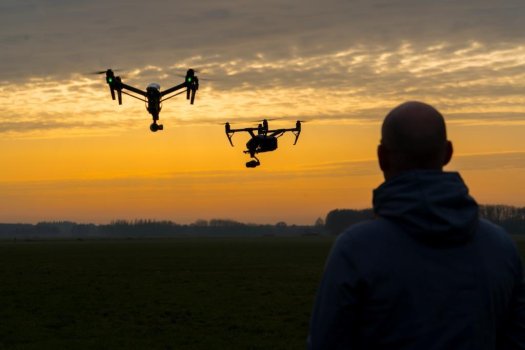K
Kathleen Martin
Guest
Researchers have developed a real-time approach that can help prevent incidents like the large-scale disruption at London’s Gatwick Airport in 2018. Possible drone sightings at the perimeter of the airport caused the cancellation of hundreds of flights.
The researchers, from the University of Cambridge, used a combination of statistical techniques and radar data to predict the flight path of a drone, and whether it intends to enter a restricted airspace, for instance around a civilian airport. Some of the results will be reported today (15 September) at the Sensor Signal Processing for Defence Conference in Edinburgh.
Their solution could help prevent a repeat of the Gatwick incident, as it can spot any drones before they enter restricted airspace and can determine, early, if their future actions are likely to pose a threat to other aircraft. This new predictive capability can enable automated decision-making and significantly reduce the workload on drone surveillance system operators by offering actionable information on potential threats to facilitate timely and proportionate responses. Real radar data from live drone trials at several locations was used to validate the new approach.
Drones have become ubiquitous over the past several years, with widespread applications in agriculture, surveying and e-commerce, among other fields. However, they can also be a nuisance or present a potential safety risk, especially with the wide availability of cheap and increasingly more capable platforms. A few days before Christmas 2018, reported drone sightings near the perimeter of Gatwick Airport caused hundreds of flights to be disrupted due to the possible risk of collision. No culprit was found.
Continue reading: https://innovationorigins.com/en/selected/real-time-drone-intent-monitoring-could-enable-safer-use-of-drones/
The researchers, from the University of Cambridge, used a combination of statistical techniques and radar data to predict the flight path of a drone, and whether it intends to enter a restricted airspace, for instance around a civilian airport. Some of the results will be reported today (15 September) at the Sensor Signal Processing for Defence Conference in Edinburgh.
Their solution could help prevent a repeat of the Gatwick incident, as it can spot any drones before they enter restricted airspace and can determine, early, if their future actions are likely to pose a threat to other aircraft. This new predictive capability can enable automated decision-making and significantly reduce the workload on drone surveillance system operators by offering actionable information on potential threats to facilitate timely and proportionate responses. Real radar data from live drone trials at several locations was used to validate the new approach.
Drones have become ubiquitous over the past several years, with widespread applications in agriculture, surveying and e-commerce, among other fields. However, they can also be a nuisance or present a potential safety risk, especially with the wide availability of cheap and increasingly more capable platforms. A few days before Christmas 2018, reported drone sightings near the perimeter of Gatwick Airport caused hundreds of flights to be disrupted due to the possible risk of collision. No culprit was found.
Continue reading: https://innovationorigins.com/en/selected/real-time-drone-intent-monitoring-could-enable-safer-use-of-drones/

